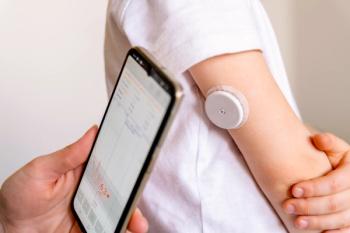
CHEST 2025: How Clinicians Can Optimize Biologic Therapy for Severe Asthma Management
Sara Assaf, MD, shares insights on selecting biologic therapies for severe asthma, including biomarkers, patient factors, and managing nonresponders effectively.
In an interview with Pharmacy Times®, Sara Assaf, MD, assistant professor at the University of New Mexico, discussed key considerations when selecting biologic therapies for severe asthma, including patient factors, treatment characteristics, and insurance coverage.
During her session at CHEST 2025, held October 19-22 in Chicago, Illinois, Assaf outlined biomarkers such as blood eosinophil counts, sputum eosinophilia, FeNO levels, and IgE that help predict treatment response. Assaf also explained how clinicians can evaluate nonresponders, decide when to switch biologics, and approach the emerging concept of clinical remission in asthma management.
Pharmacy Times: What key factors should clinicians consider when selecting a biologic for severe asthma?
Sara Assaf, MD: There are multiple factors to consider. Some of them are patient-related, like the number of exacerbations or corticosteroid dependence, the baseline spirometry, quality of life, and symptom burden. Others could be more related to the biologics themselves, like the route of administration, frequency, dosing, insurance, and cost, as well as other patient preferences that might come into play.
Pharmacy Times: What biomarkers or clinical traits best predict a patient’s response to biologic therapy?
Assaf: There are quite a few biomarkers that reflect—or are sometimes surrogate markers of—type 2 inflammation in the airways. I think across guidelines, mostly it's the blood eosinophilic count. Sputum eosinophilia can also be used in some centers, as well as FeNO levels and IgE or any perennial allergies. Mostly, those are the biomarkers that we look at that are specific to type 2 inflammation.
Pharmacy Times: How can clinicians identify and manage nonresponders or determine when to switch biologics?
Assaf: That's a great question. Overall, we usually give it a try for about four to six months, depending on the response of patients—clinical response, exacerbations, how they’re doing in terms of asthma questionnaires, and symptom burden. Then we assess adherence, because there’s not only adherence to the inhaler regimen but also adherence to biologics. After that, we make the decision to maybe readdress the phenotype, recheck biomarkers, and see what switch can be made from one class to another to determine if they might be more responsive—if it’s type 2 driven or type 2 low—and consider other options for switching.
Pharmacy Times: What does “clinical remission” mean in the context of severe asthma, and how close are we to achieving it?
Assaf: Yeah, I think that’s a new concept with clinical remission, which probably should not be mistaken for a clinical cure. But in terms of reduction of exacerbations or being exacerbation-free and improvement in symptoms, we can get to that remission state where the disease is in control. It’s pretty much like when children grow out of asthma. It doesn’t mean that there’s a curative situation, but there’s still a lot to understand about what to do when we reach clinical remission. I think when we had our talk yesterday, we discussed the different options—do you taper an inhaler regimen, taper the biologic, keep things the same, or stop the biologic? There are still quite a few unmet needs within this area.
Newsletter
Stay informed on drug updates, treatment guidelines, and pharmacy practice trends—subscribe to Pharmacy Times for weekly clinical insights.





















































































































































































































